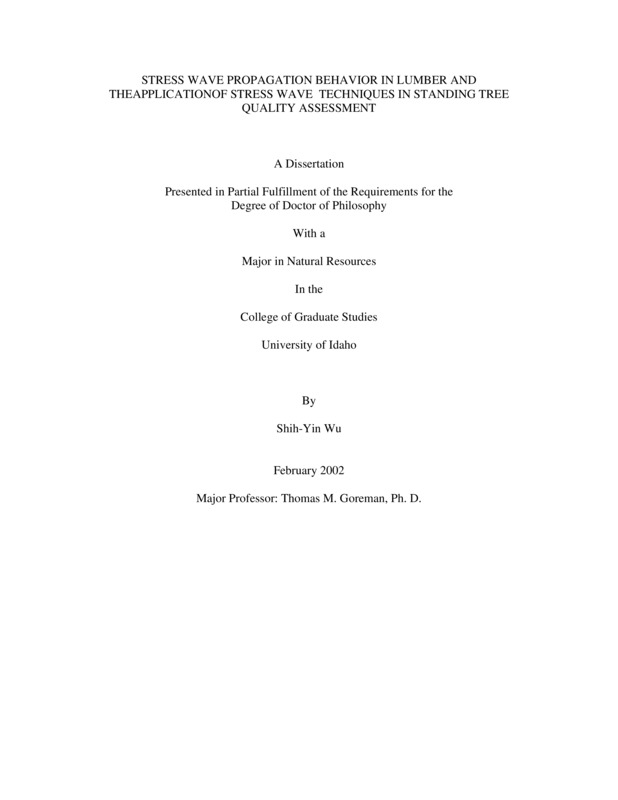PDF PREVIEW
Stress Wave Propogation Behavior in Lumber and the Application of Stress Wave Techniques in Standing Tree Quality Assessment Item Info
Download Preview PDF
Please note: PDF file may not be complete document.
- Title:
- Stress Wave Propogation Behavior in Lumber and the Application of Stress Wave Techniques in Standing Tree Quality Assessment
- Creator:
- Wu, Shih-Yin
- Date Created:
- 2002-02
- Description:
- The objective of this research was to increase the efficiency and accuracy of nondestructive testing (NDT) methods used for quality assessment of wood based materials. In addition, an evaluation of standing trees using stress wave based NDT methods was conducted to predict the quality of products produced from them. These studies explored the correlation between a tap tone NDT technique, static bending test, stress wave test, and flexural vibration test that are commonly applied in wood. A strong relationship was found between the tap tone technique and the other techniques. Also, studying the effects of growth characteristics of wood on stress wave propagation through lumber, we demonstrated that stress wave velocities are significantly affected by the growth characteristics of wood. A quality index model, using stress wave velocity measurements, for predicting the quality of products produced from standing trees was also developed in this study. The modulus of elasticity (MOE) of lumber was positively correlated with the quality index of the tree from which lumber was produced. ANOVA analytical results showed that growing site characteristics did not significantly affect lumber MOE.
- Document Type:
- Dissertation
- Library Call Number:
- TA420.W8 2002
- Subjects:
- stress wave propogation behavior stress wave wood products quality assessment NDT nondestructive testing forest operations
- UIEF Unit:
- UIEF
- Location:
- UIEF
- Latitude:
- 46.869607
- Longitude:
- -116.733856
- Department:
- Department of Forest Products
- Type:
- Text
- Format:
- application/pdf
Source
- Preferred Citation:
- "Stress Wave Propogation Behavior in Lumber and the Application of Stress Wave Techniques in Standing Tree Quality Assessment", UIEF Research Exchange, University of Idaho Library Digital Collections, https://www.lib.uidaho.edu/digital/uief/items/uief_0024.html
Rights
- Rights:
- In copyright, educational use permitted.
- Standardized Rights:
- http://rightsstatements.org/vocab/InC-EDU/1.0/

